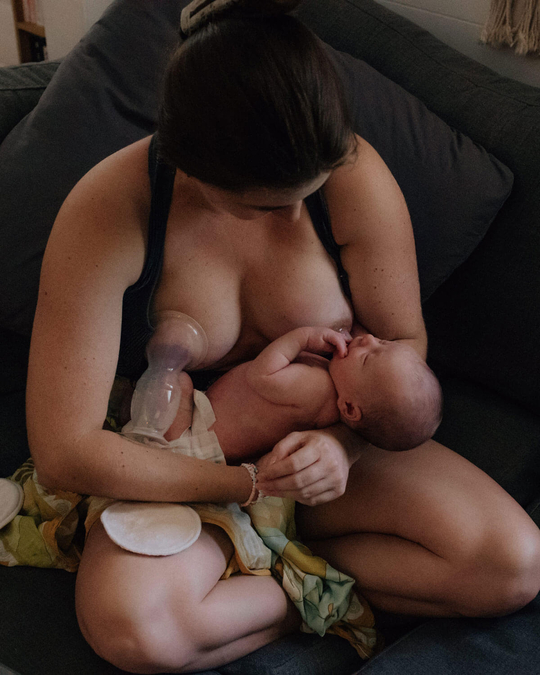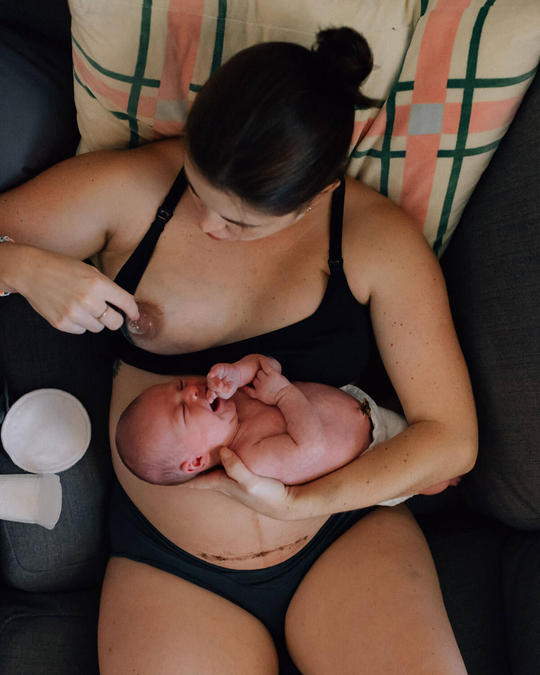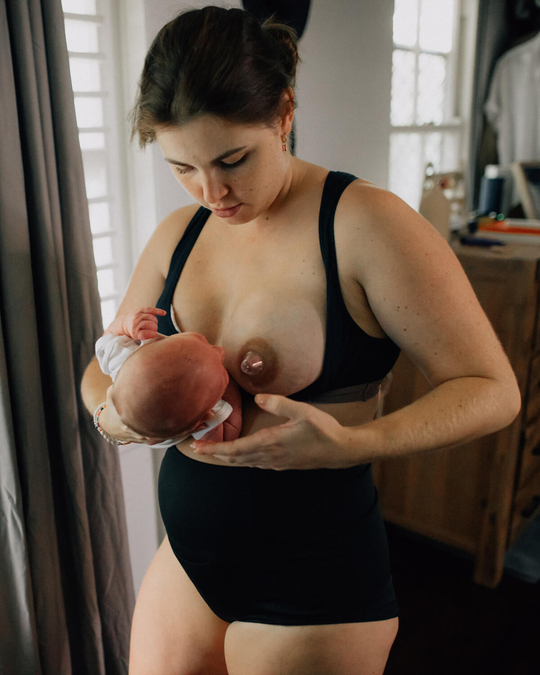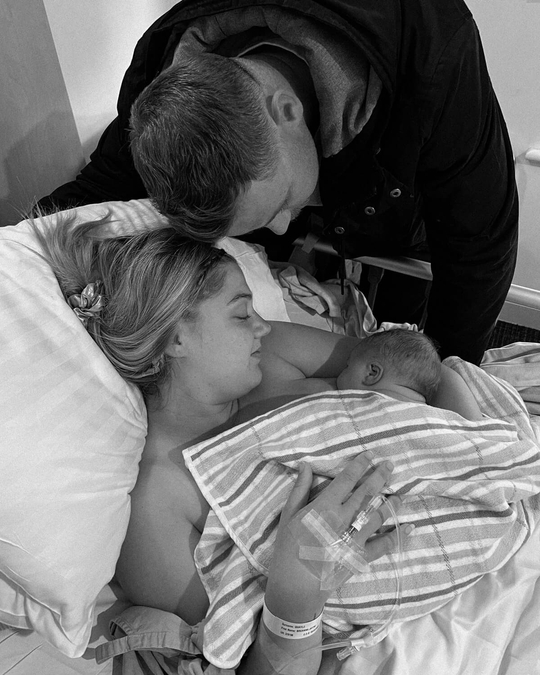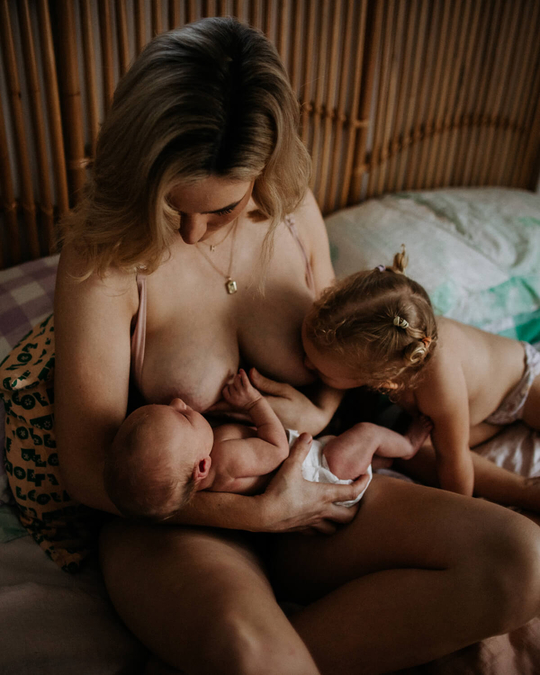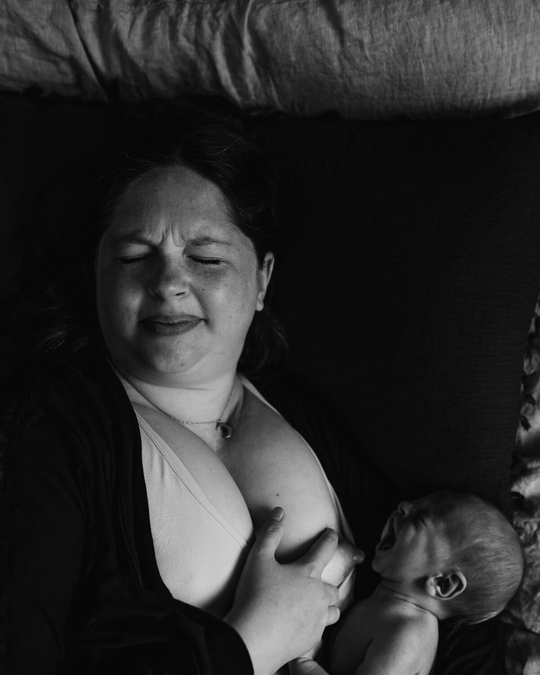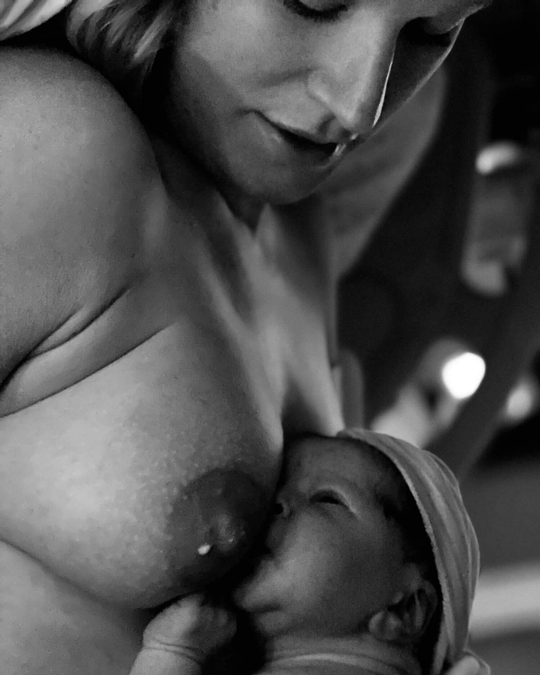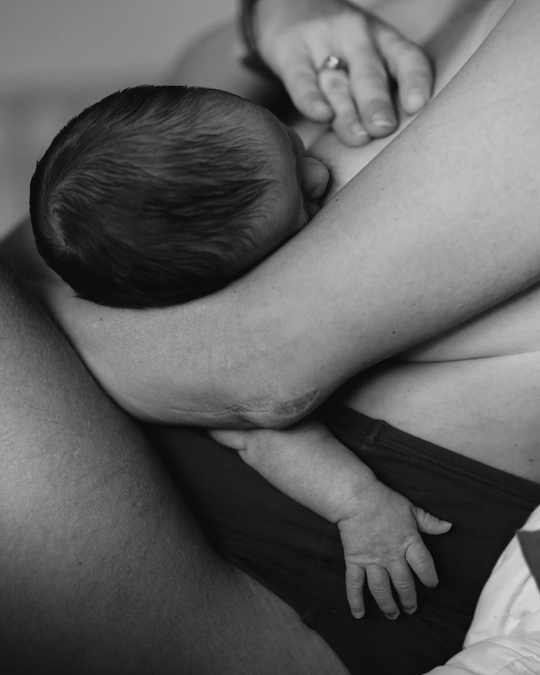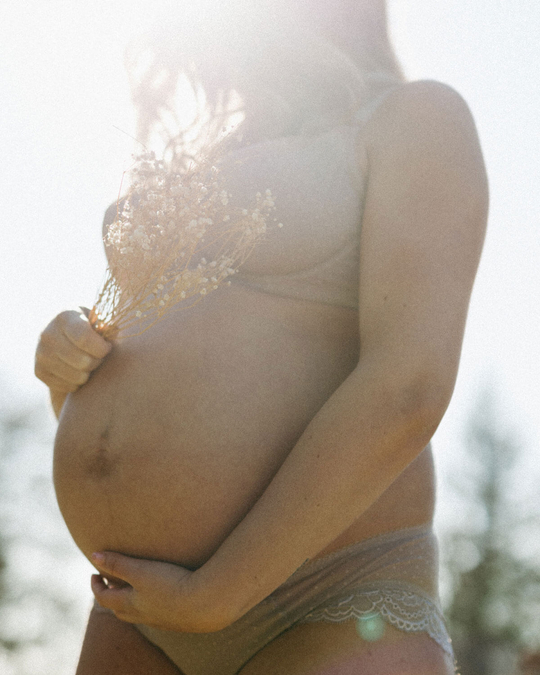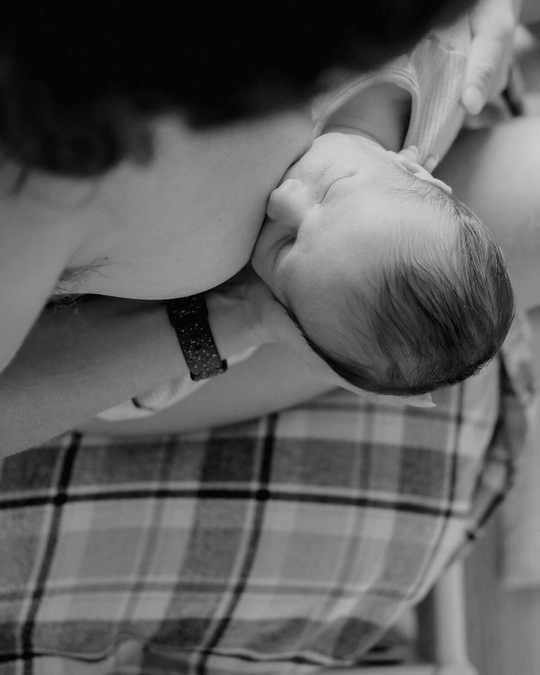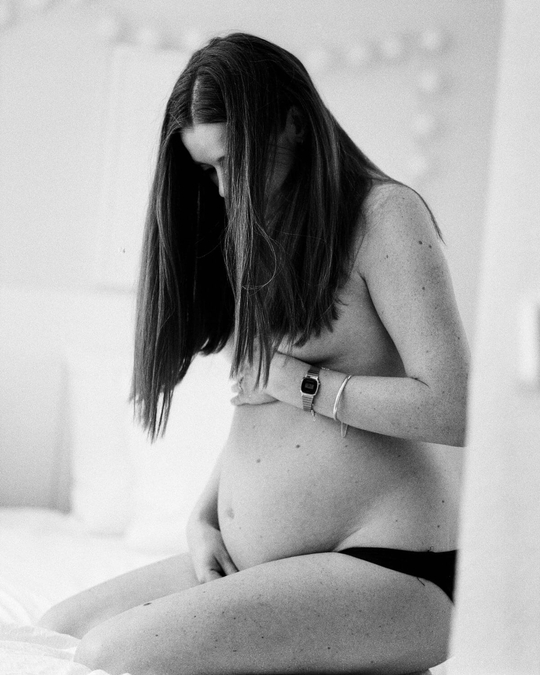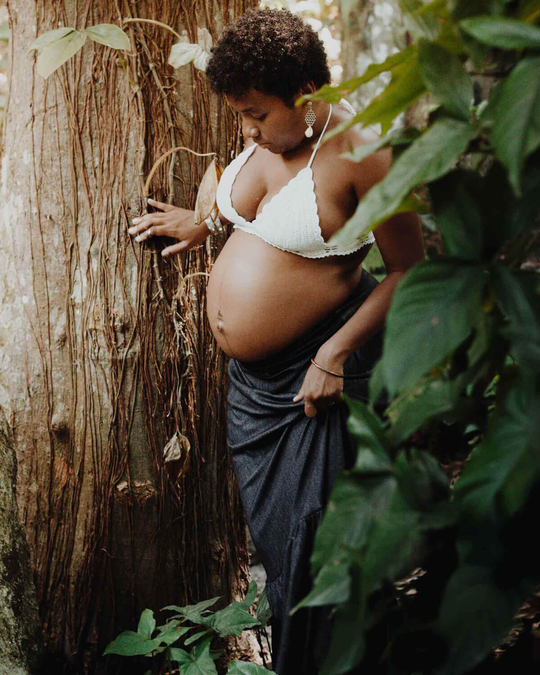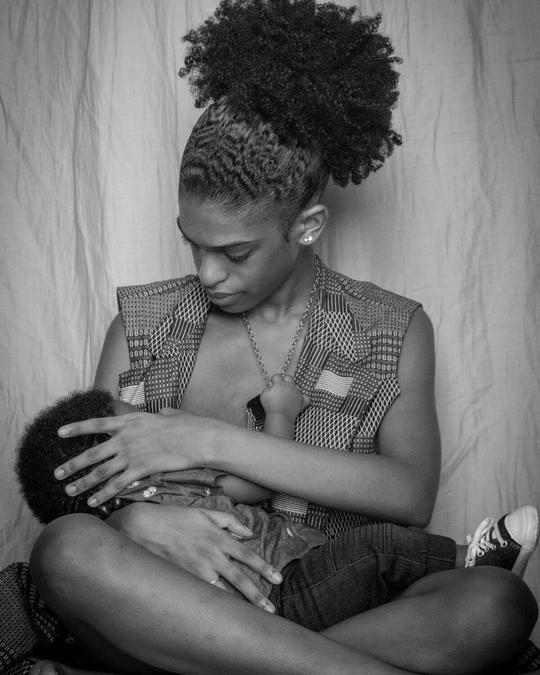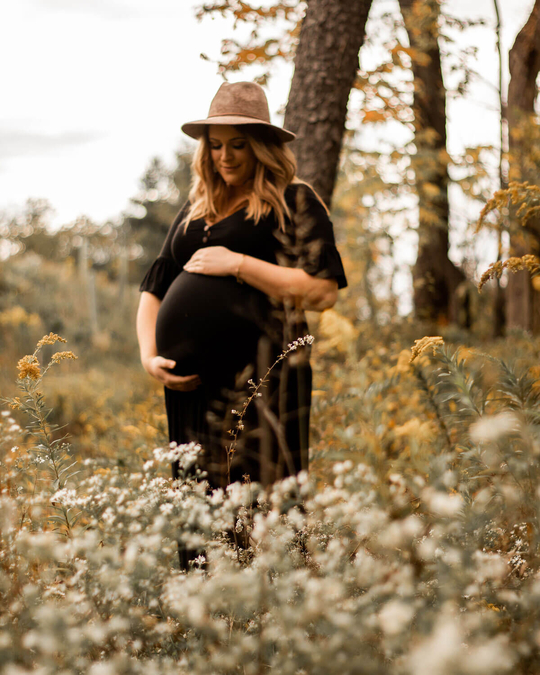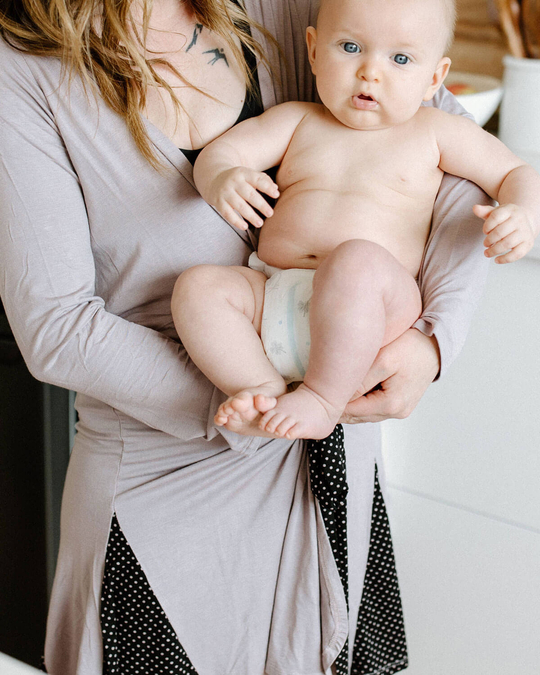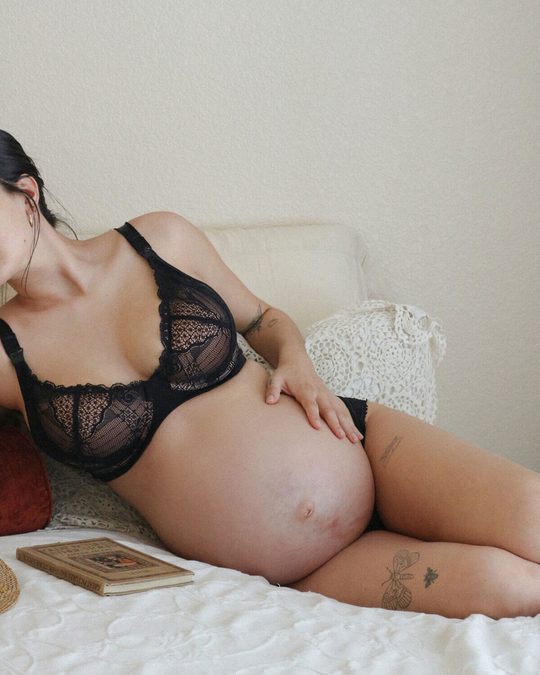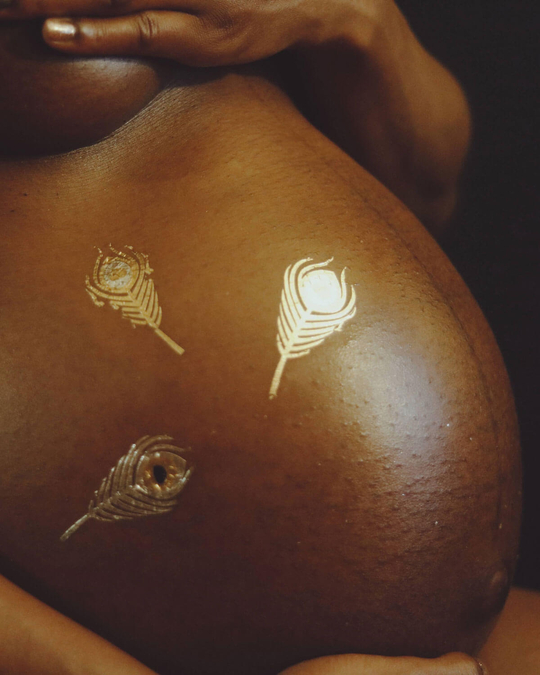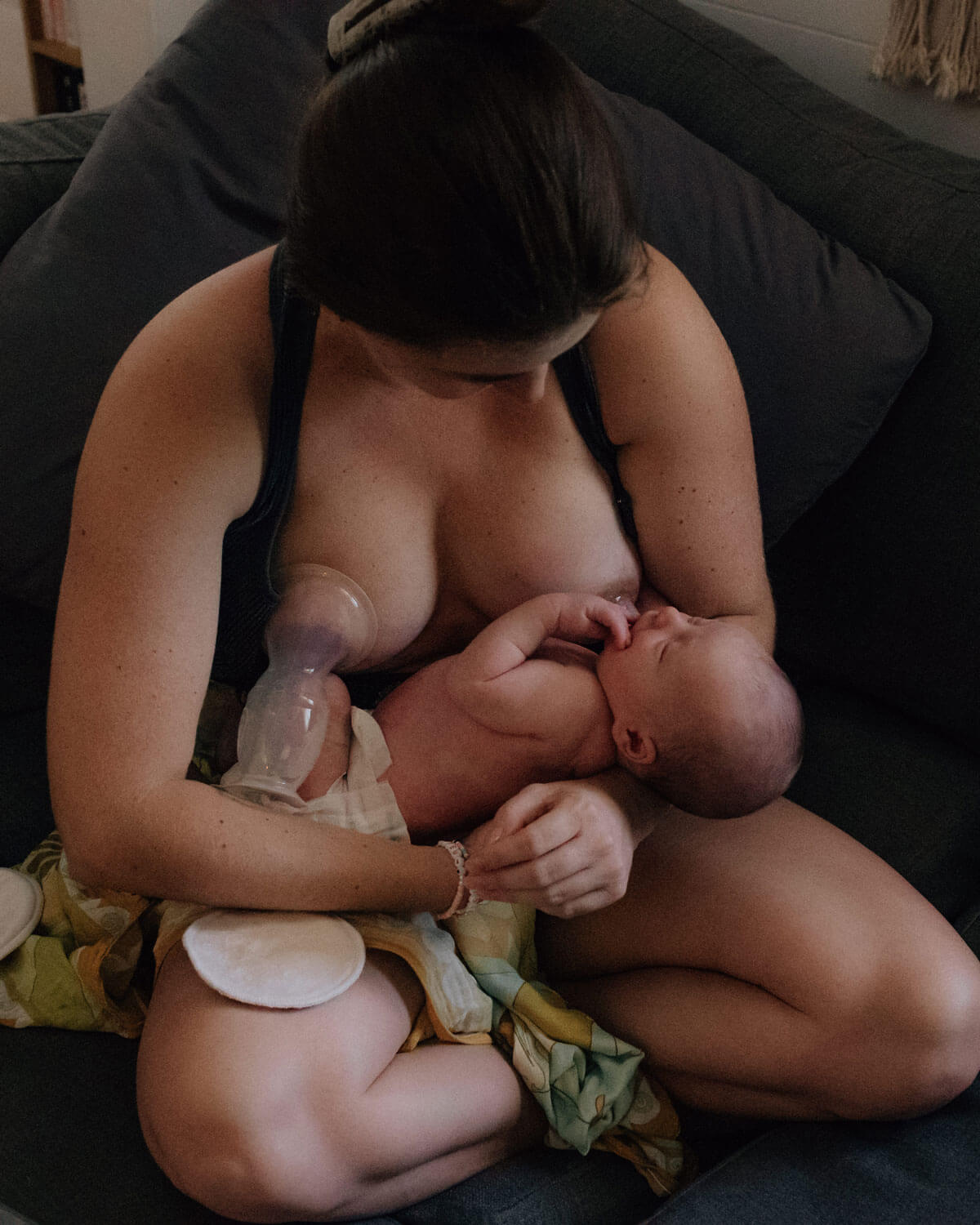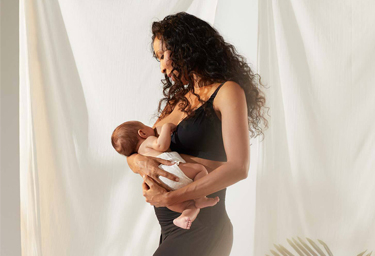Cluster feeding means just that – a cluster of feedings closely spaced together. Sometimes it can feel like your baby is feeding constantly! If you are wondering if cluster feeding is what is happening in your breastfeeding experience, we will cover everything to expect, what is considered normal and signs to be aware of.
Why do babies cluster feed during the first two weeks?
As much as we might hope for our babies to be on a regular, predictable schedule when it comes to breastfeeding, clocks don’t give us much help during the first 2 weeks postpartum. That’s because from birth through the first two weeks your baby is doing a tremendous amount of growth! During this time, cluster feeding is common (notably during days 2-5) as your milk increases in volume and your baby is “putting in the order” for you to have a wonderful milk supply.

What is the purpose of cluster feeding?
Since breastfeeding works on a supply and demand system, the more your baby feeds at the breast, the more milk your body will make. Thus, cluster feeding serves dual purposes: to help support your milk supply, and since your baby is small and growing, the frequent nutrition from breast milk helps balance their blood sugar.
Why is my baby feeding every hour at night?
Cluster feeding can mean that your baby may take small feeding intervals during an hour or two as they prepare for a longer sleep stretch. This can also mean that bub is feeding every hour at night, especially as night nursing is essential to help support milk supply and help tide your baby over.
While incredibly exhausting, this behavior is entirely normal. The amount of milk transferred during these short spurts also varies depending on the mother’s let down and baby’s ability to transfer milk.

When do babies cluster feed?
You can expect that cluster feeding can occur during:
- The first two weeks of life after birth
- The six week mark
- At the 3 month mark
These time periods all mark times of extreme growth and development for your little one! Cluster feeding can happen in between and in addition to these timelines as every baby’s growth pattern can be different and vary.
Is my baby cluster feeding or are they not getting enough?
This is likely one of the most common concerns running through your mind if you have a baby who is nursing for what feels like every hour, through the day and night. You can reassure yourself that frequent feedings are normal if:
- Your baby is gaining weight well, they should be back to or approaching their birth weight by two weeks of life.
- Your baby is having adequate wet and dirty diapers, look for at least three stools a day.
- Your breast should feel notably softer and less “full” after feedings as your baby has transferred milk.
- Your baby appears relaxed and self detaches from the breast after a feeding (they have open palms) and appear sleepy.
Checking in with these signs can be helpful in providing the reassurance that your baby is right on track, even when cluster feeding! Know that during these first few weeks and months of life, your baby is designed to be and stay close to you or on you. Allowing baby unrestricted access to the breast vs relying on the clock or a schedule will support your milk supply, allow for better sleep and help support your growing baby.
LIKE WHAT YOU READ?
Join CakeMama Club & get 10% OFF your first order!
Plus you’ll get tips + tricks for pregnancy, postpartum & breastfeeding, get member-only offers, earn CakeCoins every time you shop + more. Learn more










